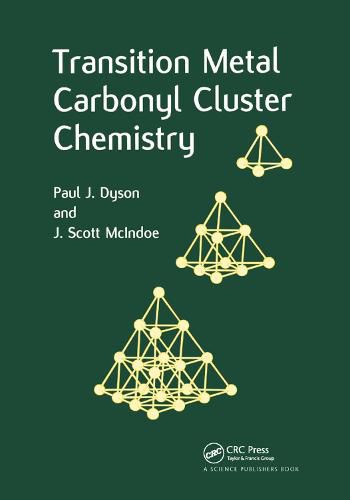Readings Newsletter
Become a Readings Member to make your shopping experience even easier.
Sign in or sign up for free!
You’re not far away from qualifying for FREE standard shipping within Australia
You’ve qualified for FREE standard shipping within Australia
The cart is loading…






Transition metal carbonyl clusters (TMCCs) continue to inspire great interest in chemical research, as much for their fascinating structures as for potential industrial applications conferred by their unique properties. This highly accessible book introduces the bonding, structure, spectroscopic properties, and characterization of clusters, and then explores their synthesis, reactivity, reaction mechanisms and use in organic synthesis and catalysis.
Transition Metal Carbonyl Cluster Chemistry describes models and rules that correlate cluster structure with electron count, which are then applied in worked examples. Subsequent chapters explain how bonding relates to molecular structure, demonstrate the use of spectroscopic techniques such as NMR, IR and MS in
cluster chemistry, and outline the factors contributing to the stability, dynamics and reactivity of clusters. The second part of this book discusses the synthesis and applications of TMCCs. It emphasizes the differences between the reactivities of clusters vs. mononuclear metal complexes, contingent to the availability of multiple-bonding sites and heterosite reactivity. The final chapters discuss reactions in which clusters act as homogeneous catalysts; including discussion on the use of solid and biphasic liquid-liquid supported clusters in heterogeneous catalysts.
A useful reference for those commencing further research or post-graduate study on metal carbonyl clusters and advanced organometallic chemistry, this book is also a cornerstone addition to academic and libraries as well as private collections.
$9.00 standard shipping within Australia
FREE standard shipping within Australia for orders over $100.00
Express & International shipping calculated at checkout
Transition metal carbonyl clusters (TMCCs) continue to inspire great interest in chemical research, as much for their fascinating structures as for potential industrial applications conferred by their unique properties. This highly accessible book introduces the bonding, structure, spectroscopic properties, and characterization of clusters, and then explores their synthesis, reactivity, reaction mechanisms and use in organic synthesis and catalysis.
Transition Metal Carbonyl Cluster Chemistry describes models and rules that correlate cluster structure with electron count, which are then applied in worked examples. Subsequent chapters explain how bonding relates to molecular structure, demonstrate the use of spectroscopic techniques such as NMR, IR and MS in
cluster chemistry, and outline the factors contributing to the stability, dynamics and reactivity of clusters. The second part of this book discusses the synthesis and applications of TMCCs. It emphasizes the differences between the reactivities of clusters vs. mononuclear metal complexes, contingent to the availability of multiple-bonding sites and heterosite reactivity. The final chapters discuss reactions in which clusters act as homogeneous catalysts; including discussion on the use of solid and biphasic liquid-liquid supported clusters in heterogeneous catalysts.
A useful reference for those commencing further research or post-graduate study on metal carbonyl clusters and advanced organometallic chemistry, this book is also a cornerstone addition to academic and libraries as well as private collections.